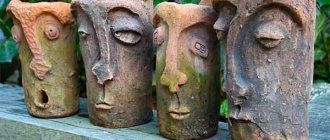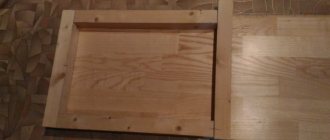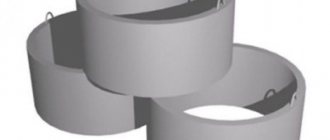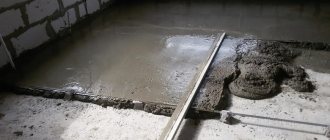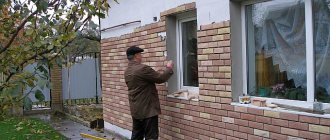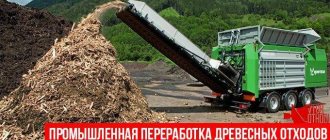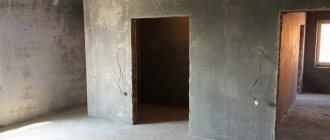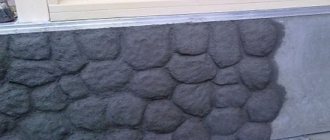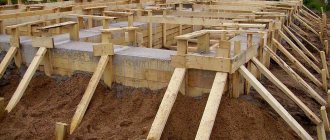Gypsum is a material widely used in creativity and construction since time immemorial. It is known for sure that it was used in antiquity for making sculptures. Today, professional architects and sculptors use gypsum in their work. Each of us can purchase this material at a hardware store for personal needs. Plaster sculptures are easy to make at home without being a professional. Detailed instructions and tips for working - especially for you.
Main characteristics of gypsum
In any hardware store you will find gypsum powder or gypsum plasters. The material is made from sedimentary rock - gypsum stone. Gypsum owes such a diverse and widespread use in construction work to its availability combined with low cost. Working with this material is quite simple. It is necessary to dilute it with water, after which you can begin pouring molds or modeling. Attention: gypsum hardens very quickly in air and at the same time increases slightly in volume (no more than 1%). Prepare the solution for one time, immediately before starting to work with it. The material is capable of conveying the smallest details. If desired, plaster sculptures can be decorated with paints and other finishing compounds to create a high-quality imitation of precious stone or metal.
Kinds
Arranging and designing our country house or dacha is not only a very exciting, but also responsible business. You need to think through every element, the smallest detail. This also applies to garden figures. After all, there are so many types that we need to imagine what design style we will use.
If we want to create the atmosphere of a warm and cozy country house, we can place animal figurines on the territory of the dacha. Imagine a dog meets us at the porch. A cow is grazing on a small meadow.
The romantic style will be complemented by garden figures such as an angel, a girl, and birds.
A swan will look good near an artificial pond or mini-fountain.
Our favorite characters will help us find ourselves in a fairy tale: Baba Yaga, the frog princess, the wolf, the hare, and funny cute gnomes. A donkey or deer will decorate the lawn.
You can create original figures for the garden yourself and come up with your own style. The decorative component of your garden depends only on your imagination and desire to realize your plans.
The highlight of your garden can be topiary figures. But if you are not such an experienced gardener, start with simple ball shapes, for example. If you are ready to create animals or some characters - go for it!
Methods for making plaster sculptures
If you are not a professional sculptor, it makes sense to start working with plaster by making sculptures using the molding method. This technology involves obtaining finished products by pouring gypsum mortar into molds. Molding is a very simple way to create sculptures, which is suitable even for children's creativity. For children under 12 years of age, creative activities must be conducted by an adult. An alternative way to make a sculpture from plaster is to model the desired figure from diluted plaster on a frame. It is convenient to use a variety of spatulas and other tools in the work. What sculptures can you make from plaster with your own hands? The frozen material is quite porous and fragile. But despite this, it can be used to make outdoor sculpture. Plaster is ideal for creating interior elements and decorative figures. If you are just starting to work with this material, try doing something small and simple in shape for the first time. Gradually improving your skills, you will learn to create real masterpieces from plaster.
"Car" fantasies
An outdated iron horse, which once regularly carried the family and everything needed for gardening to the dacha, can still come in handy! Even if it lost its wheels and was pretty rusty. Place the frame in the center of the area, in a visible place, paint it with spray paint of the desired color and arrange a flower bed in it, planting lush flowering plants.
Something similar can be done with an old motorcycle, especially if it has a sidecar. If the level of skill allows, then a frame figure of a motorcyclist, decorated with artificial grass, turf or flowers imitating his clothes and helmet, will become a fantastic decoration.
An interesting design solution that supports the theme of transport could be a bicycle or scooter, decorated with baskets of flowers, installed on the site or mounted on a fence.
Ready-made form or homemade?
To make plaster sculptures, you can use ready-made molds. They are sold in craft stores. An interesting idea is to use culinary molds, for example for ice, cupcakes or candy. In joint creativity with children, you can use sand molds for casting plaster. If you couldn’t find anything interesting, try making a mold yourself. Simple sculptures (for example, interior columns or large mushrooms for garden decoration) can be made using household tools. For example, a mushroom cap can be cast in a basin or bowl of a suitable size, and a stem can be cast in a cut-off plastic bottle. Casting molds can be removed from any existing figures and figurines. Cover the selected product with cling film. Then cover it with clay or plasticine. Wait for the material to harden, then carefully cut the mold and pull out the figure hidden inside. Your homemade mold is ready, now you can make sculptures from plaster.
Choosing an image motif
Wooden sculptures have existed since ancient Greece and Rome. In the Middle Ages this art became ubiquitous; carved wooden figures decorated temples and palaces, and a carefully carved and gilded goddess was placed on the bow of a sailing ship.
Contemporary wood sculpture impresses with its variety of stylistically different directions. These include Japanese netsuke, fancy African sculptures, and figures decorating country, chalet and art deco interiors. The accumulated wealth of ideas can become a source of inspiration for the owner who decides to decorate his site. Wooden sculptures suitable for homemade production are conventionally divided into three types:
- Sadovaya. A garden is a place where you want to relax and communicate with nature, and a three-dimensional figurine will come in handy here. Very often, images of animals, real and fabulous, are chosen to decorate the garden.
Country style Source dachnaya-zhizn.ru
- Sculpture for home. Wooden art objects are able to demonstrate the taste and inner world of home owners; they must be conceptually unified with the interior design.
- Figures for children. They are popular as an ideal educational material for children from 6 months: they are environmentally friendly, develop imagination and tactile skills.
Figures made from different types of wood Source baza.zruchno.com.ua
See also: Catalog of projects of stone houses with a plinth
Preparing the mold and pouring plaster
The form requires special processing before starting work. Carefully coat the inner walls with Vaseline, vegetable oil or paraffin. Pay special attention to small casting elements. Professional sculptors often prepare a special lubricant for processing forms. Take 2 parts grated soap, add 1 part vegetable oil and 7 parts water. Mix the ingredients until smooth. The lubricant is ready - you can begin processing the inner surface of the mold. Do not skip this step under any circumstances, otherwise you will not be able to remove the finished product after it has hardened. How to make a sculpture from plaster with your own hands, how to properly dilute the dry mixture? Simply mix the powder with water until it reaches the consistency of sour cream. Be sure to leave the plaster for a few minutes, and then, after mixing thoroughly, proceed to filling the mold. A small amount of PVA glue can be added to the water to prepare the gypsum solution - no more than 25% of the total volume of liquid.
Wood selection
It is believed that the ideal material for beginners is linden, which has soft, flexible wood. In fact, without practice, such a craft can be quite easily ruined by careless movement, which is much more difficult to do with hard rock. The choice of wood type is important for the type of craft. So, for example, for sculpting a face, light, plain wood is chosen (dark varieties are less expressive). Recommendations boil down to the following tips:
- If you are planning medium-sized wooden figures, apple, birch, hazel or cypress wood is suitable.
- If you are planning a miniature with a lot of detail, choose birch, alder, pear and linden; Both aspen and maple will do.
Fairytale story Source dachnaya-zhizn.ru
- Pine and spruce wood with a pronounced texture (striped pattern) are used for crafts with large elements; These varieties are not suitable for working with small parts.
- For large figures, you can use aspen: durable, inexpensive wood is not afraid of moisture and does not rot when it comes into contact with the soil.
Product protective treatment
The optimal temperature for drying gypsum products is 16-25 degrees. Sculptures made by molding should be removed from the molds after complete hardening. At this stage, you can smooth out any uneven areas with a brush or wet sponge. If you are completely satisfied with the shape of the plaster sculptures, leave them for a while to dry completely. The next stage is preparing the figures for painting. Apply a special primer in several layers to the entire surface of the product. You can replace it with PVA glue diluted with water. If you have made a sculpture that will stand outside, you can treat it with drying oil or shellac for additional protection.
Features of decorating a site with garden figures
The main purpose of garden figurines is decorative, but they can perform a practical function and serve:
- flashlights;
- stands for hanging and climbing plants and flowers;
- bird feeders and drinkers;
- decoration of artificial reservoirs;
- seats - these can be all kinds of original stones or stumps on which you can rest, etc.
The decor should be in harmony with the landscape design and buildings on the site - a country house or a permanent house.
In a good, solid yard with a house made of modern materials, products made from car tires or bottles will look out of place - more noble materials are needed: stone, wood, metal. And on a modest summer cottage, all kinds of “handicrafts” from whatever comes to hand will be quite appropriate.
The main thing is to feel the style and not create bad taste. It’s enough to love your site, feel its beauty, use detailed instructions, and you won’t need a landscape designer.
How to properly decorate a site with figures?
When decorating a site, follow these important rules:
- Compliance with landscape style . Choosing a rustic design means forgetting about plastic and giving preference to natural materials.
- Amount of decor. Don’t overdo it and use the golden rule – it’s better not quantity, but quality. It’s better to have one large, well-executed element than a dozen small, botched items.
- Choosing a location. If you are not sure whether a garden figure will look good in a certain place, use cardboard models that can be made, for example, from boxes of household appliances. It’s a good idea to draw up a diagram of the site on paper with an accurate drawing of future elements.
- Size. This plays a role in landscape design. Place miniature figurines on a low, trimmed lawn, and place larger elements next to bushes or in areas with tall grass.
- Create compositions . It’s not a good idea to place decorations alone around the area. Use it to decorate and create a flower bed, garden path, fountain or pond.
When is decorating with shapes a bad idea?
Homemade products do not always look organic. The worst thing is when the decor is made of poor quality, from the cheapest materials and according to the most “ancient” instructions. If your grandmother decorated her dacha or yard with rubber tires, simply laying (digging) them around the area, it is not necessary to repeat the experience of generations - it is better to take a modern approach to the issue.
If there is already purchased decor on the territory, but you are “pushed” for creativity, remember that homemade and purchased figures will be different, therefore, it is better not to mix them in one composition.
If you bought gnomes in a store and decided to build them a house, “brothers”, Snow White or precious stones, it will go together beautifully.
Sculpture decor
After the primer has dried, you can begin the most creative part of the process - designing the sculpture. Garden sculptures made of gypsum must be painted with the most durable paints. Small figures and children's crafts can be painted with gouache. To paint a sculpture that will be located indoors, you can use any paints and techniques for applying them. After painting, you can additionally coat the product with a layer of transparent varnish to secure the decor. If appropriate, additionally decorate plaster sculptures with decorative elements. These can be individual beads and rhinestones, bows, textile parts or special plastic figures.
Ladybug made of stones
Another simple option for making a ladybug for garden decoration is a product made from a large stone. You can take a few stones and create a whole family of insects.
All you need are boulders of various sizes and black and red paint. The boulders are washed, dried, and then all that remains is to paint them. The dots on the wings and eyes are drawn in black, and the wings themselves are drawn in red. If you also use white paint to create the ladybugs' eyes, the sculptures will turn out more expressive.
Important! You can paint ladybugs not only with red, but also with any other paint - after all, they are not real, but fantasy. However, it is worth choosing bright and rich shades so that the sculptures immediately catch your eye.
When creating a composition, you can take one large boulder - this will be the mother, and place several small children near it. You can take 2 large boulders and several small ones - then you get a whole family.
It is better to place garden sculptures near a tree or bush. Ladybugs also look good on the lawn, among the grass. You should not place a sculpture near flower beds; it will distract attention from the flowers to itself.
Useful tips
Follow all the rules for working with gypsum and the sequence of technological steps. Very often, problems in working with this simple material arise when the sculpture manufacturing technology is violated. Be sure to thoroughly dry the products after removing them from the mold and only then proceed with their further design. Try using different shapes to make sculptures. Any small figurines, children's toys and household items are suitable as samples for their manufacture. Using the technique described, you can make impressions of your hands at home. Making sculptures from plaster is an interesting and accessible form of creativity for everyone!
Balls, stands, vases made of concrete
Concrete is one of the most durable materials, perfect for creating garden sculptures. The manufacturing process for landscape decorations is simple. Sculptures are often made from concrete in the form of stands, large flower vases, and huge balls.
The manufacturing process is as follows: a solution consisting of peat, water, cement, and coarse sand is mixed. Then it is thoroughly mixed and poured into a prepared form. The shape itself can have any appearance, from a ball to a three-dimensional flower or something more original.
Important! To prevent the solution from sticking to the container, it should be treated with oil.
The concrete mixture is poured into the mold, and time is waited for the composition to dry. Then it is taken out, leveled with the remaining concrete mixture, sanded, and wait until the finished sculpture dries. Next, the workpiece is painted.
